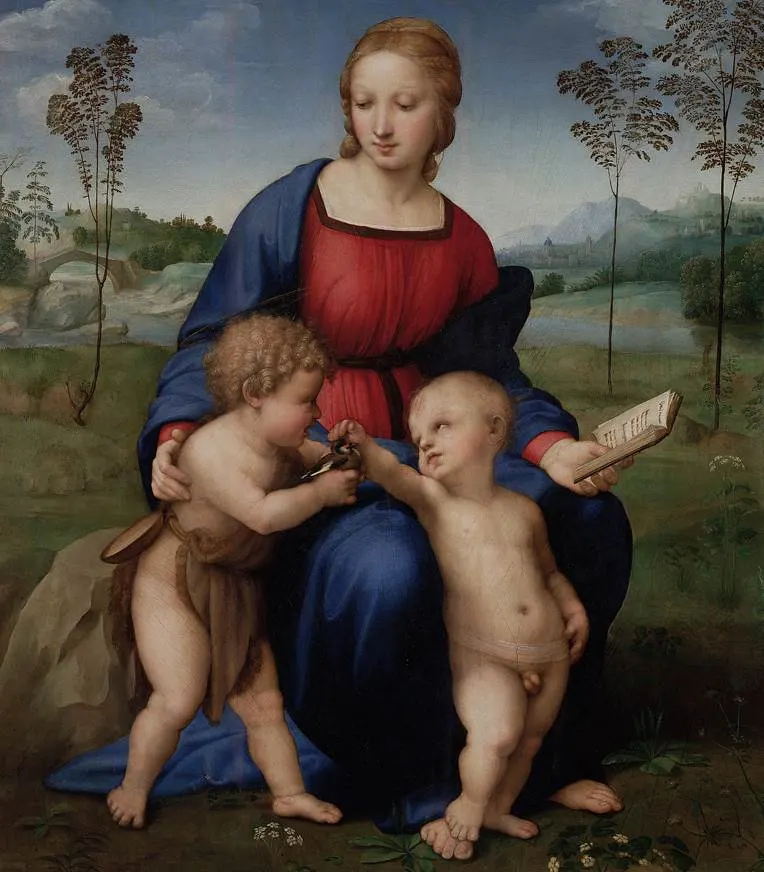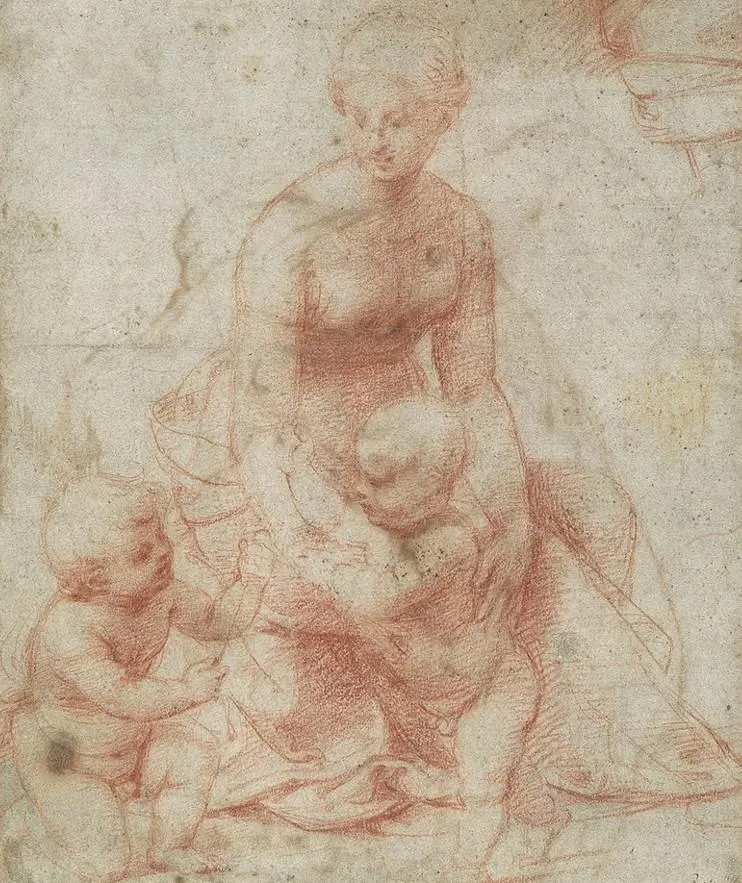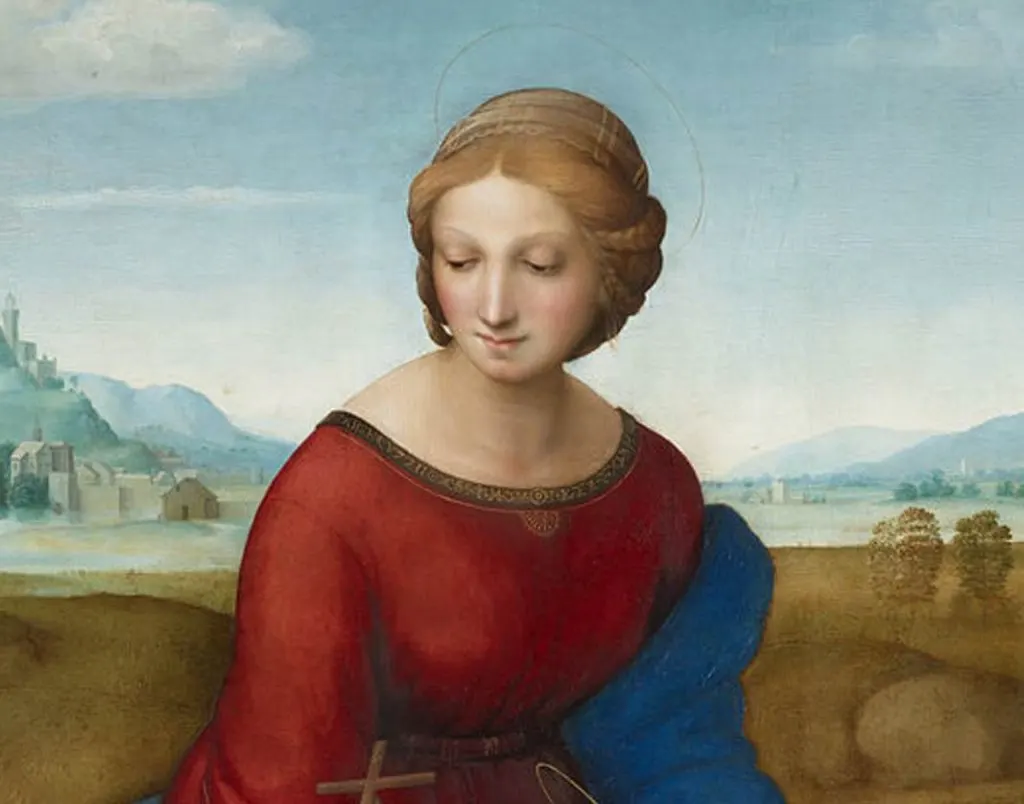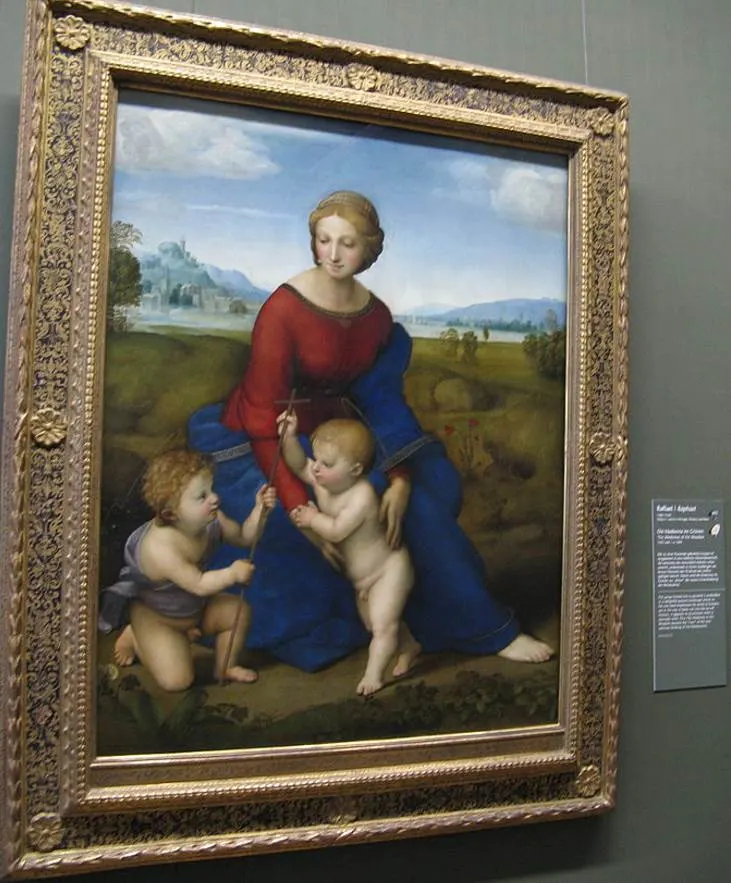The exact whereabouts of Raffaello Sanzio da Urbino (1483-1520) in the early 16th century are a bit hazy. The Renaissance master probably lived a nomadic life as he traveled from one Italian city to another to complete his commissions.
Despite this notion, some art historians still refer to the period between 1504 and 1508 as his “Florentine period.” That’s because he painted quite some great masterpieces of the High Renaissance in this city.
In this article, we’ll take a closer look at some of the most interesting facts about the Madonna del Prato by Raphael, one of the Italian artist’s many Madonna paintings.
1. It was completed shortly after Raphael arrived in Florence
Raphael was born and raised in the city of Urbino in the Manche region of Italy. His father was an artist but died shortly after his mother passed away, leaving the young artist as an orphan at the age of 11.
He was probably trained in the workshop of Renaissance master Pietro Perugino (1446-1523), an Umbrian painter from whom Raphael learned the trade.
He quickly exceeded the talent of his master and started earning commissions when he was still a teenager in the early 16th century. He became a nomad who traveled from one place to another to complete commissioned for rich patrons.
He finally moved to Florence in 1504 and spent quite a bit of time here until he moved to Rome in 1508. It’s believed that he completed the Madonna del Prato shortly after arriving in Florence between 1504 and 1505.

2. The name of the painting refers to the landscape
The Madonna del Prato translates to “Madonna in the Meadow,” a reference to the somewhat idyllic grassy meadow in which the main figures are sitting.
The official name of the painting is “The Madonna with the Christ Child and Saint John the Baptist,” a reference to the figures that are depicted.

The Virgin Mary can be seen staring at the infant Saint John the Baptist while both John and the infant Jesus Christ are staring at each other. The harmonious feeling of this painting is virtually the definition of the art of the High Renaissance of which Raphael was one of the leading figures.

3. The pyramidal composition was influenced by another famous artist
When Raphael arrived in Florence in 1504, he certainly encountered one of the most famous artists in history, a man named Leonardo da Vinci (1452-1519). He had come to Florence from Venice after his patron Ludovico Sforza was overthrown in Milan in 1499.
The young artist was intrigued by the much older master (who wasn’t, right?) and was influenced by da Vinci’s paintings during this period in the capital of the Tuscany region.
The way he portrayed the subjects in his paintings resembles the pyramidal composition of the Mona Lisa painting. The way he structured the figures together resembles the pyramidal composition used by da Vinci in works like the Virgin of the Rocks.
The figures and overall composition of the Madonna del Prato closely resemble another famous Raphael painting called the Madonna of the Goldfinch which was completed around the same time as well.

4. Raphael made a preparatory drawing which is now in New York City
Just like for most of his other commissions, Raphael produced a preparatory drawing before he started adding layers of oil to the board of the actual painting.
This drawing allows us to see the influence of Leonardo’s technique in which he composes the figures in a pyramidal shape.
This also confirms the fact that he painted the sky in the background after finishing the figures. This became clear after a study of the painting was conducted in the early 1980s.
This preparatory drawing was made of red chalk and is now part of the collection of the MET (Metropolitan Museum of Art) in New York City.

Tne idyllic meadow and perfect sky in the background are elements that turn this particular work into a painting that overflows with tranquility. This doesn’t mean, however, that it doesn’t feature a serious subject matter.
Raphael included several elements that are symbols of Christianity, including:
- The cross held by Saint John the Baptist is a reference to Jesus’ crucifixion.
- The poppy in the grassy meadow is a symbol of Christ’s passion, including his death and resurrection.
- The meadow constrasts the sky which symbolize life on Earth and the eternal life in Heaven.
6. The colors of Mary’s clothes have a deeper meaning as well
Raphael painted several Madonna paintings during this period of his life and most of them wear a red dress and a blue mantle. This is no coincidence as these colors also refer to Christianity.
Blue in Christianity symbolizes heaven, eternity, and truth, and the Virgin Mary is often depicted wearing blue as a symbol of her role as the mother of God in Heaven.
Red, on the other hand, represents Christ’s death and Mary wearing red can be seen as a symbol of presence at her son’s crucifixion.

7. How big is the Madonna del Prato by Raphael?
Most of Raphael’s Madonna paintings have similar dimensions, except for perhaps Madonna of the Pinks, a delicate little work of art at the National Gallery in London that has dimensions of just 27.9 × 22.4 centimeters (11 × 8.8 inches).
Madonna del Prato by Raphael is an oil on board (made of poplar wood) that has dimensions of 113 × 88 centimeters (44 × 35 inches).
8. Where is the painting located today?
The painting was commissioned by a rich cloth merchant named Taddeo Taddei (1470-1529). He had close ties to the Medici family who ruled over the Florentine Republic at the time and was a great patron of the arts who recognized Raphael’s talent.
The painting was acquired by Archduke Ferdinand Karl of Austria in the 17th century and hung at Ambras Castle between 1663 and 1773. It was moved to Vienna and was referred to as the Madonna del Belvedere as it became part of the imperial collection at the Belvedere Palace.
Today, the painting can be admired at the Kunsthistorisches Museum, the largest art museum in Austria that was opened in 1891.

